Sign up for The Wild
We’ll help you find the best places to hike, bike and run, as well as the perfect silent spots for meditation and yoga.
You may occasionally receive promotional content from the Los Angeles Times.
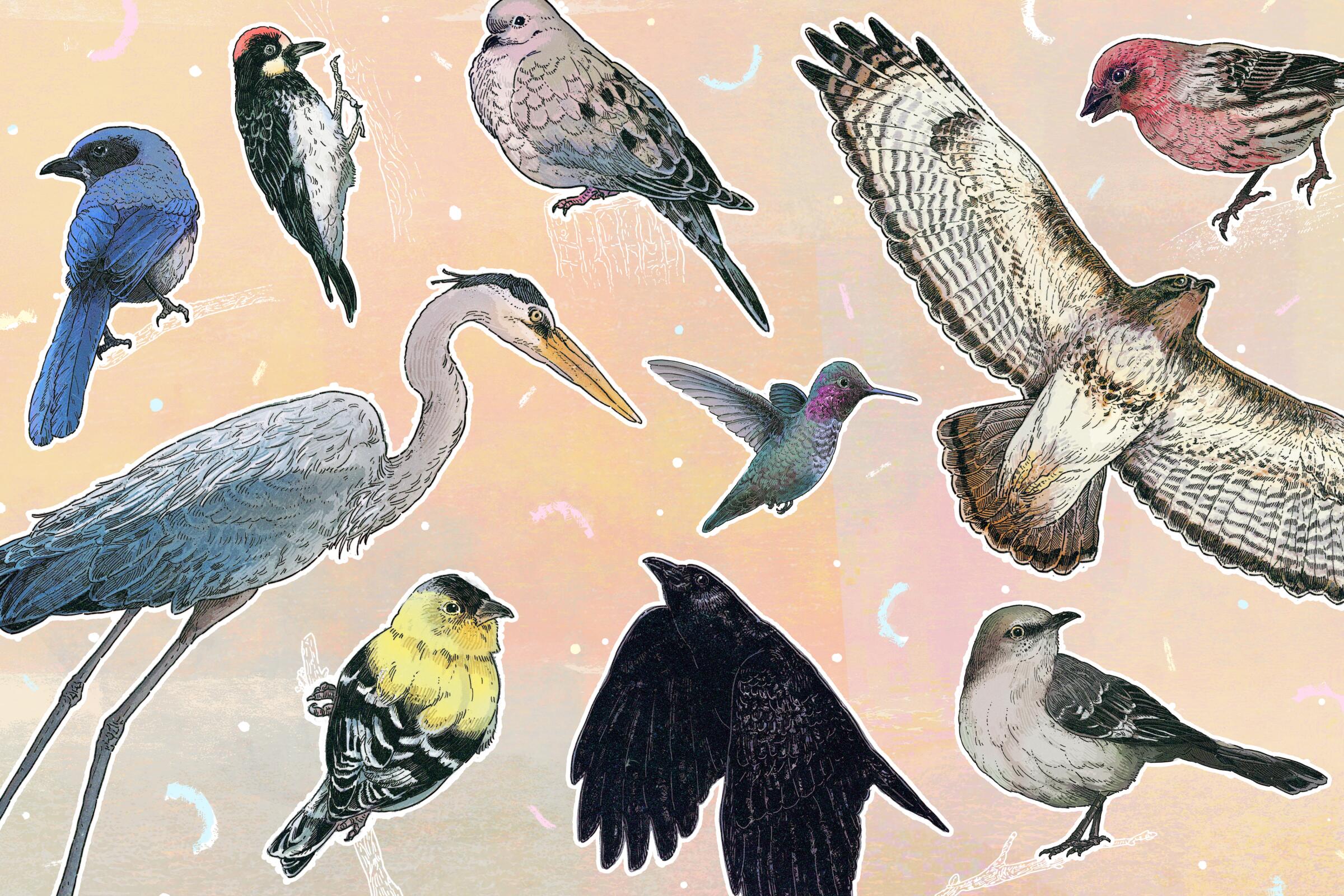
Step outside. Hear that? It’s birdsong, and it seems louder than ever. At a time when we’re all hunkered down, birds seem to be commanding our attention — and getting it.
The calls, chirps and trills that usually go unnoticed amid Southern California’s urban hum are taking people by surprise. “There’s a sudden interest in birds, and for good reason,” said John Fitzpatrick, ornithologist and executive director of the Cornell Lab of Ornithology in Ithaca, N.Y. “It’s a great, hopeful hobby.”
Downloads of Merlin, the lab’s bird guide app, recently doubled over last year, and submissions to its online EBird data project are up 50%, Fitzpatrick said.
Birding may be the ideal pastime we all need right now, said John Rowden, senior director of bird-friendly communities at the Audubon Society. “I think it’s a very challenging time for a lot of people,” the Venice resident said. “If there are things we can focus on that bring us joy, we should grab onto that.”
Research shows that listening to birdsong relaxes the body and sharpens the mind. Watching birds sends us outdoors and into nature, which benefits humans in many ways, including keeping anxiety, anger and depression at bay.
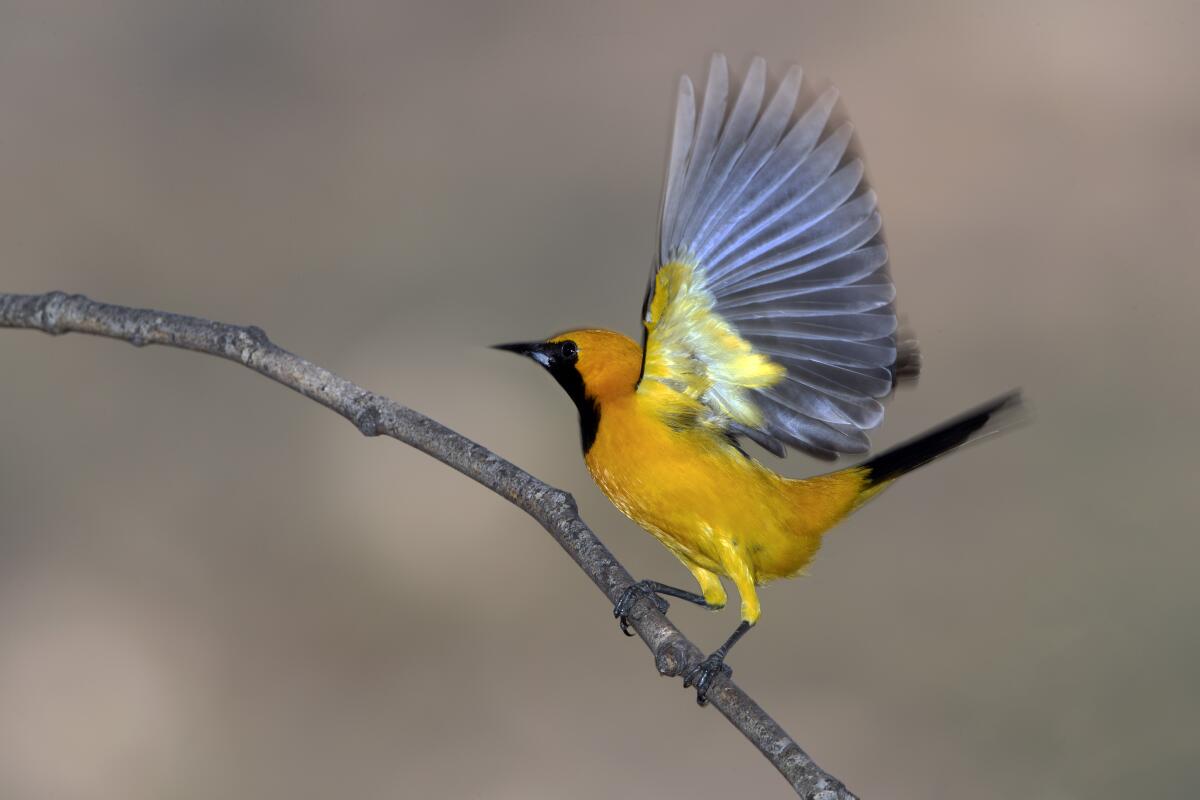
The best part? You can start in your backyard with binoculars and a newfound curiosity about which species visit and dwell there. There are more than 1,100 species in the U.S. and more than 600 in California. Some are bound to touch down in your backyard.
But first, about that noisy birdsong.
“Dunno if I’m tripping but anyone else think the birds are getting louder?????” @xbethanyallanx tweeted on April 28, one of a number of Twitter posts asking the same question.
So what gives? Fitzpatrick said it’s a combination of things. First, more people are home these days and noticing what’s happening outside their windows. Second, human-generated noise levels have dropped, which means we’re able to hear things more clearly.
Last, there are more birds flying now. The pandemic coincided with the peak of the annual spring migration, when 2.5 billion birds move from the tropics to breeding grounds in the U.S. and Canada. “The birds are not perturbed that there’s a big human pandemic underway,” Fitzpatrick said. “They’re all doing their thing.”
When you’re ready to immerse yourself in the world of birds, here’s how to get started:
1. Dive in. Before you head out the door, read up on what birders do and why they love doing what they do. There are a lot of birding tips and information online. Audubon’s beginner birding site offers an ideal tool kit for getting started, what gear you’ll need, how backyard birding works and more.
Then move on to the Joy of Birds, which Audubon created to help get through the pandemic. You’ll find photographs of mating rituals (“Nature has way better moves than the Funky Chicken”) and crazy-cute bird moms and baby chicks. Use these stories and videos to get stoked about figuring out what’s flying in your backyard.
2. Gather gear. You’ll need something to magnify your view, and it doesn’t need to be fancy. Nicholas Lund writes about options in “How to Begin Birding”: “All you’ve got is a pair of hulking, 14-pound black plastic behemoths from your mom’s house? Use them. Little opera glasses that you hold to your face with a stick? They’ll work. One of those extending telescopes that fit in your pocket? Get ready to run through the woods like some sort of bird-watching pirate.” Once you’re hooked, you can invest in a starter pair of binoculars, often for less than $100.
Download some of our favorite birding apps, and then start looking up.
You’ll also need a field guide to help you identify birds. You can choose ones that feature illustrations, such as the popular Sibley Guide to Birds, or photographs, such as the Kaufman Field Guide. Use whichever you find most helpful. When you’re not outside, flip through the field guide to familiarize yourself with characteristics and ranges of different species.
3. Pick a bird, any bird. Go into your backyard or, if it’s open, your local park. Start with a common bird you might know, such as an American crow, sparrow or house finch. Check what the field guide or app says about the bird, and observe. What is the bird doing? How is it interacting with others? Note size, color, shape and distinguishing marks on its body or tail. Then do the same with a bird you don’t know, trying to identify marks that can help you make a positive ID. Ardent birders refer to a “spark bird,” the one they first identified that hooked them for life. “My spark bird was a male American redstart I saw while I was sick at home from kindergarten,” Fitzpatrick said.
4. Keep a list. As you get better at identifying birds, write down your sightings and notes. The site eBird (ebird.org) allows you to upload and keep track of your sightings, photos and sounds. You’ll be contributing to a big citizen science project and have a chance to see what people in other parts of the world are doing. Big-time birders rack up 5,000 or 6,000 species.
5. Explore. Make plans (after the pandemic passes) to visit other habitats and join bird walks to improve your skills. In Southern California, different habitats mean different species. Go to the beach to see sandpipers and curlews; head to forested areas to see Steller’s jays and owls. Don’t be surprised if you find yourself traveling to scout birds you want to see.
6. Enjoy birdie pop culture. Many birders compare the hobby to a scavenger hunt. Once you’re hooked — and there’s a good chance you will be — read “The Big Year” by Mark Obmascik, which chronicles obsessive birders who spend an entire year chasing species around the world. Then binge-watch David Attenborough’s “Life of Birds” BBC series , which offers a fascinating deep dive into bird behaviors.
7. Admit it, you’re a birder. Banish the thought of persnickety geezers in sensible shoes. Birding is hip.
Some bird lovers get tattoos of their favorite species, such as the reproductions of John James Audubon’s bird paintings that Chicago tattoo artist Stephanie Brown creates.
When birding in L.A., it’s best not to be too much of a purist. Some of these non-native birds love the lush fruit and palm trees we’ve planted — and are here to stay.
Red-headed parrots: What brought these squawkers to our urban soundscape? The unglamorous truth: They are escaped pets, and descendants of escapees, that swarm from Pasadena to Santa Monica to Orange County. They’re originally from Mexico but have been added to the Official List of California Birds as an introduced species. (What do you call a bunch of parrots? A pandemonium.) Learn more at the California Parrot Project.
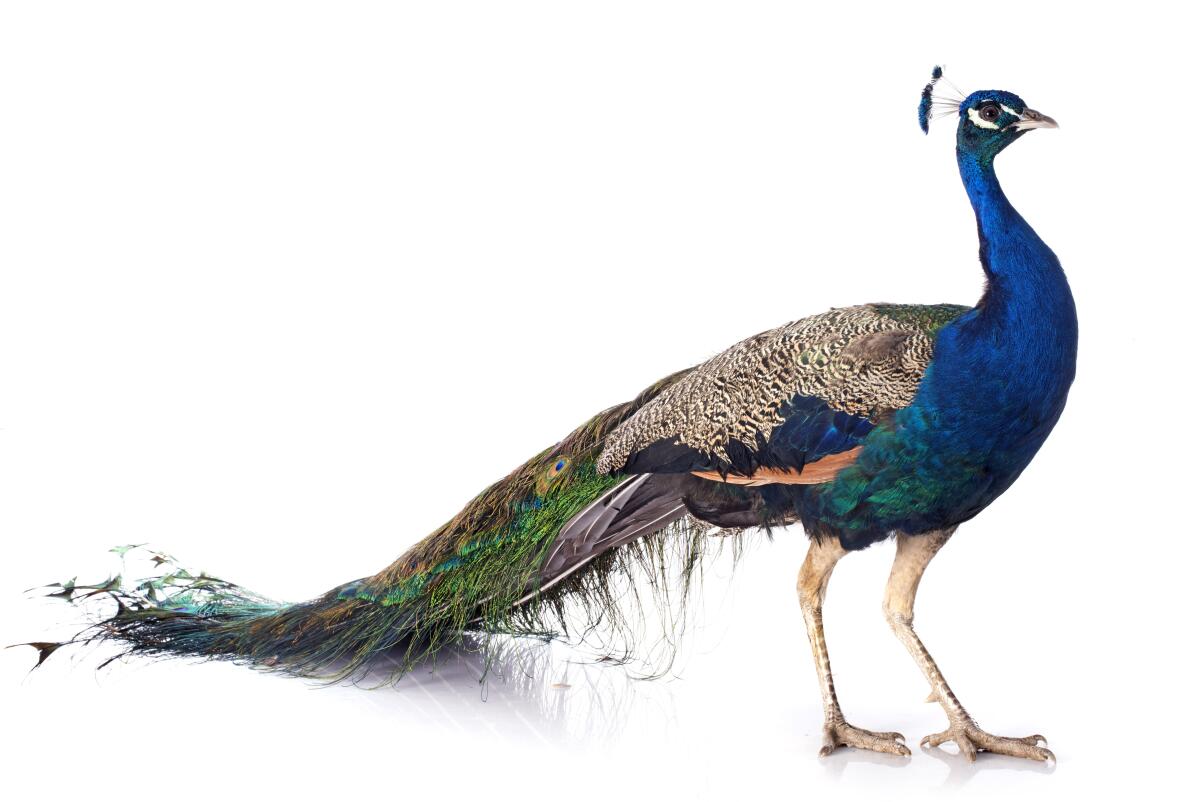
Peacocks: For those who have never encountered them, these tail-draggers hang out in Glendora, the Palos Verdes Peninsula, La Cañada Flintridge, South Pasadena and Arcadia. Peacocks hail from southeast Asia. Early Angelenos, such as land baron Elias Jackson “Lucky” Baldwin, who brought them to his rancho (now the L.A. County Arboretum), liked to set them free. They still roam and roost on car hoods, rooftops and even telephone poles, while making homicidal screeches. But, oh, those gorgeous tail displays.
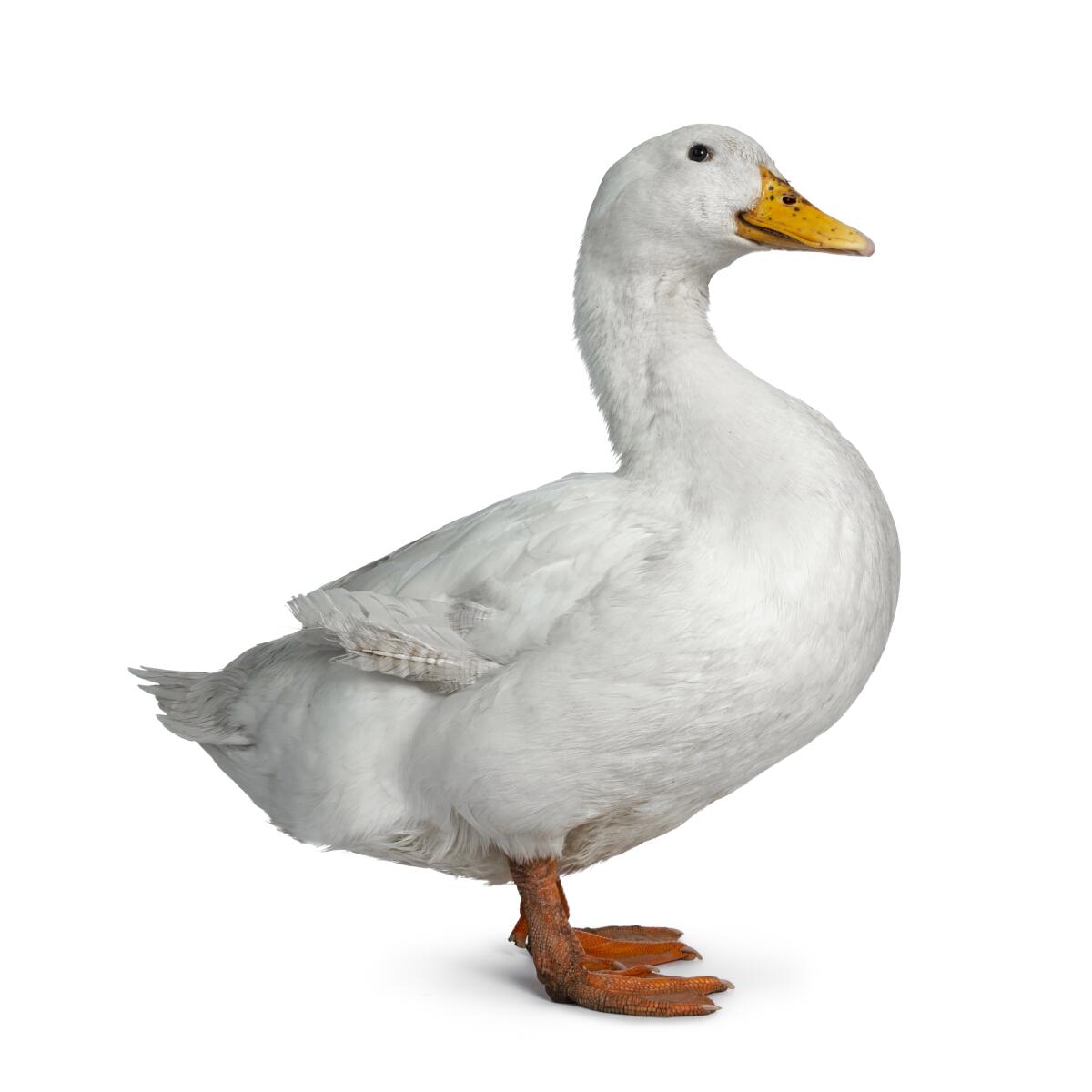
White ducks: Every kid, in the city or the burbs, has a memory about feeding the ducks in some park. The fluffy white ones are not native to L.A.; they are descendants of farm ducks and related to mallards. Their name says it all: domesticated duck.
Mandarin duck: These stunners, which hail from Japan and China, are often considered the most beautiful waterfowl in the world. The males look like Japanese paintings as they glide effortlessly on city ponds and pools. Photographers usually follow in droves when a pair touch down in L.A. Even Manhattanites were charmed by one that landed in Central Park two years ago. They nicknamed it Mandarin Patinkin.
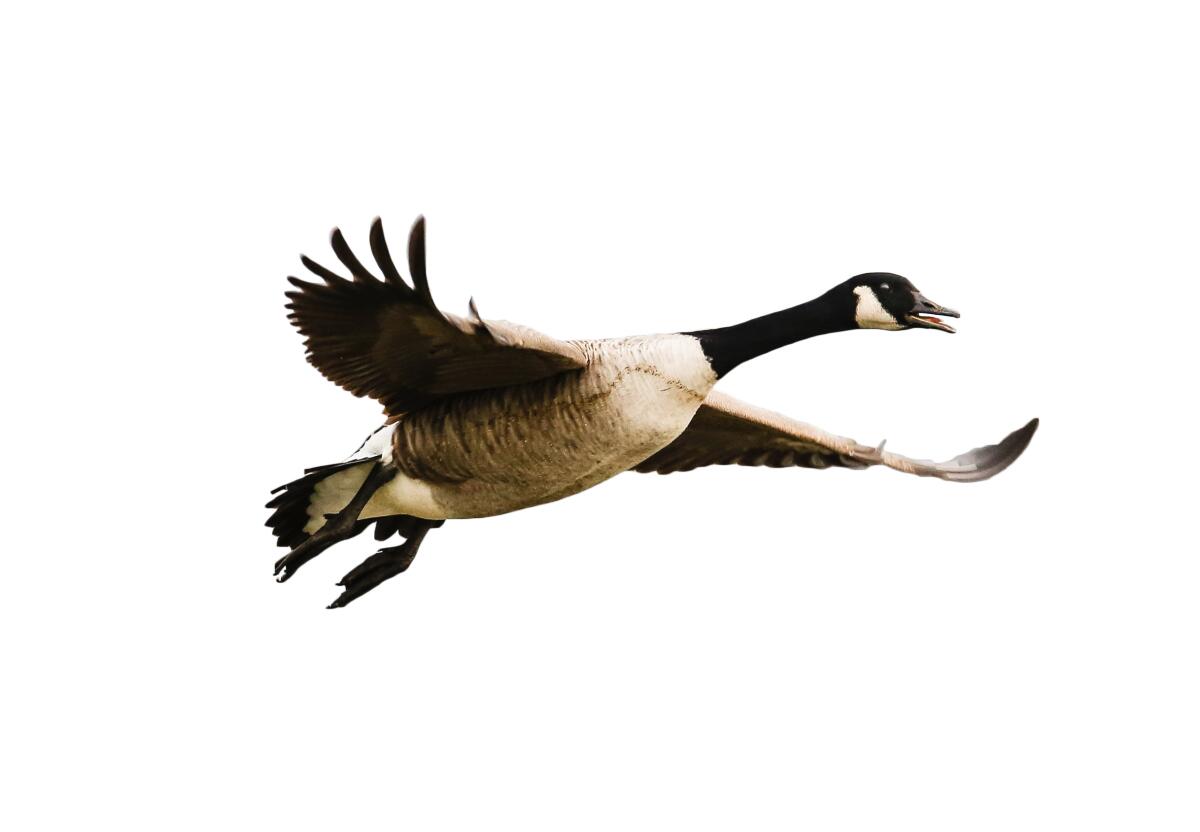
Canada geese: Maybe you remember these big birds flying in a V over a forest pond on a fall day. The urban ones are different; they don’t migrate. They like to take up permanent residence in L.A. parks and the big lawns of sterile office buildings. Plenty of grass to nibble, plenty of water in the fountains, plenty of places to make a nest.
Sign up for The Wild
We’ll help you find the best places to hike, bike and run, as well as the perfect silent spots for meditation and yoga.
You may occasionally receive promotional content from the Los Angeles Times.